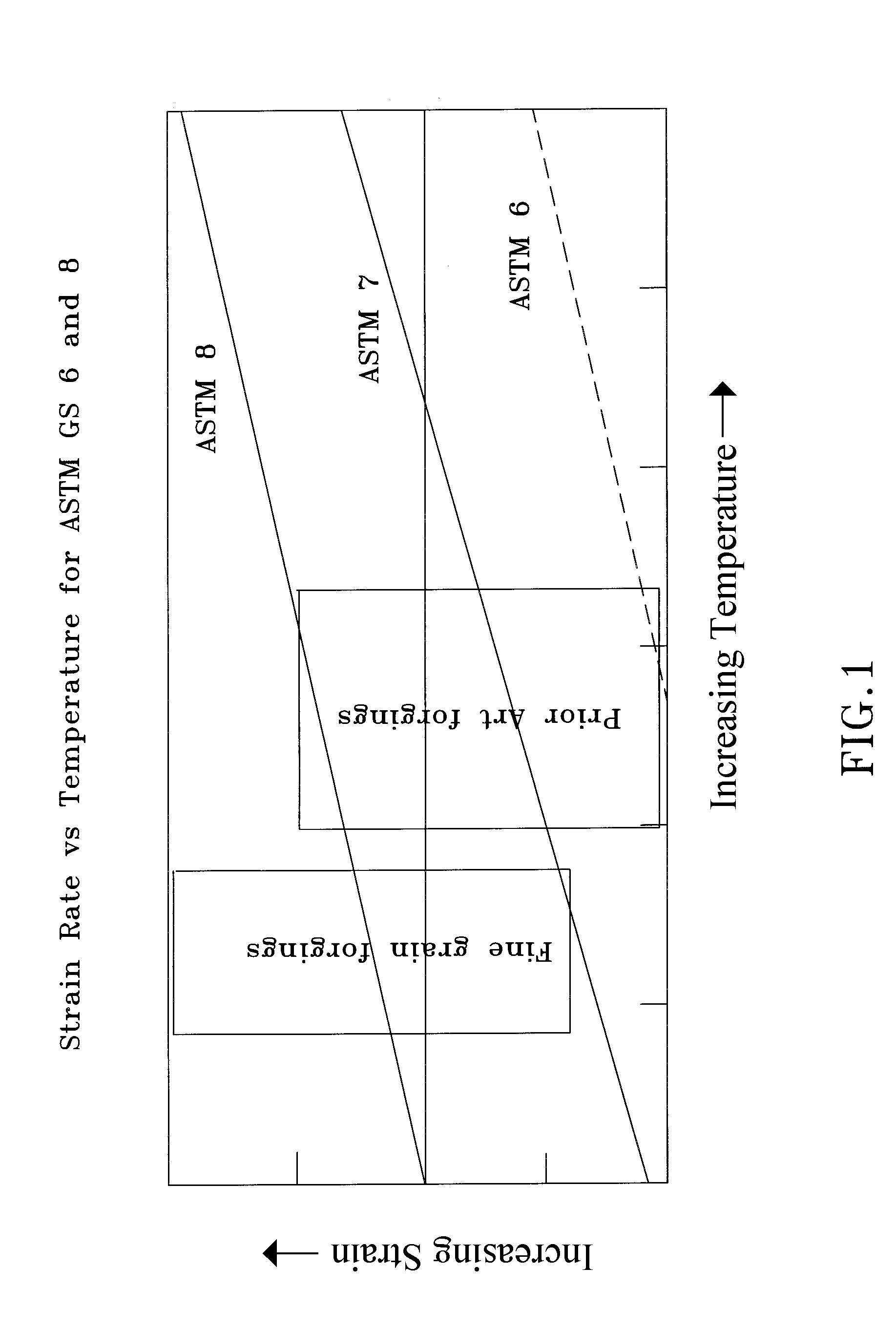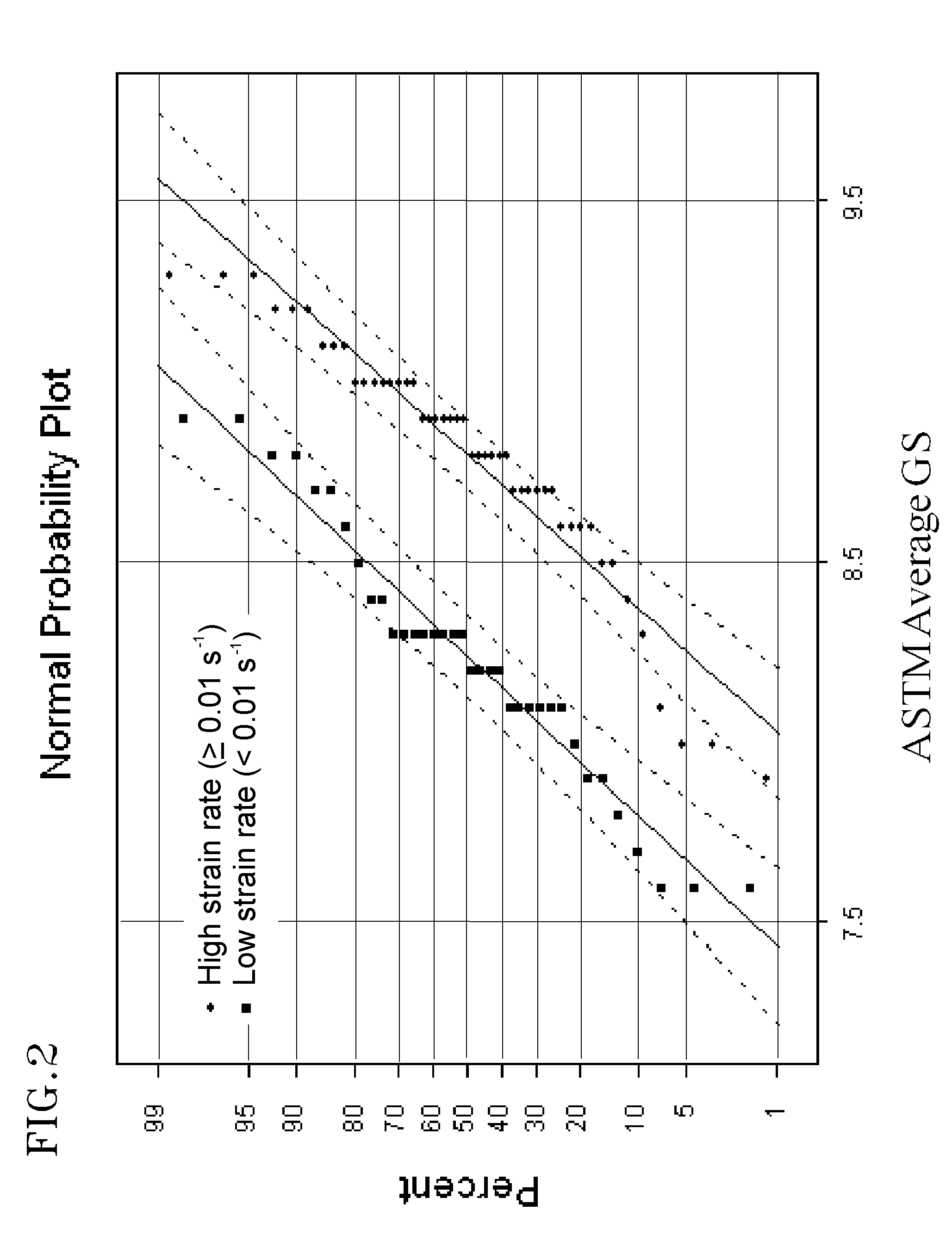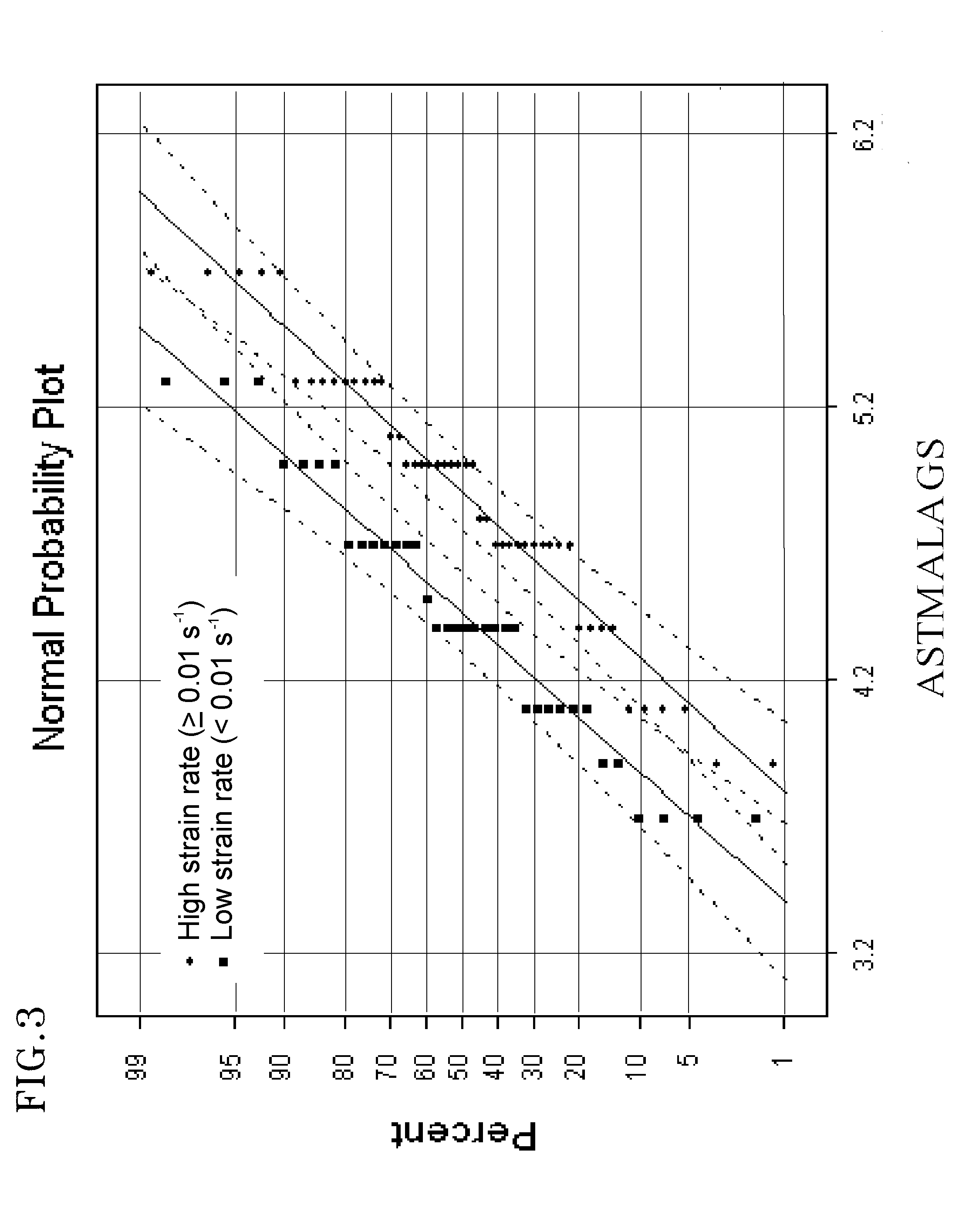Method of controlling and refining final grain size in supersolvus heat treated nickel-base superalloys
a superalloy and heat treatment technology, applied in the field of processing nickelbase superalloys, can solve the problems of less than optimal mechanical properties, prone to critical grain growth, and affecting other mechanical properties, and achieves high local strain rate and high carbon conten
- Summary
- Abstract
- Description
- Claims
- Application Information
AI Technical Summary
Benefits of technology
Problems solved by technology
Method used
Image
Examples
Embodiment Construction
[0022]The present invention is particularly directed to components formed by forging gamma prime precipitation-strengthened nickel-base superalloys. A particular example is high pressure turbine disks of gas turbine engines, which are typically formed by isothermally forging a fine-grained billet at temperatures at or near the recrystallization temperature of the alloy but less than the gamma prime solvus temperature of the alloy, and under superplastic forming conditions to enable filling of the forging die cavity through the accumulation of high geometric strains without the accumulation of significant metallurgical strains. After forging, a supersolvus heat treatment is performed, during which grain growth occurs. In the past, such a supersolvus heat treatment has typically yielded an acceptable but not wholly optimal average grain size range of about ASTM 2 to 9. In accordance with commonly-assigned U.S. Pat. No. 4,957,567 to Krueger et al., U.S. Pat. No. 5,529,643 to Yoon et al...
PUM
| Property | Measurement | Unit |
|---|---|---|
| Fraction | aaaaa | aaaaa |
| Fraction | aaaaa | aaaaa |
| Fraction | aaaaa | aaaaa |
Abstract
Description
Claims
Application Information
 Login to View More
Login to View More - R&D
- Intellectual Property
- Life Sciences
- Materials
- Tech Scout
- Unparalleled Data Quality
- Higher Quality Content
- 60% Fewer Hallucinations
Browse by: Latest US Patents, China's latest patents, Technical Efficacy Thesaurus, Application Domain, Technology Topic, Popular Technical Reports.
© 2025 PatSnap. All rights reserved.Legal|Privacy policy|Modern Slavery Act Transparency Statement|Sitemap|About US| Contact US: help@patsnap.com



